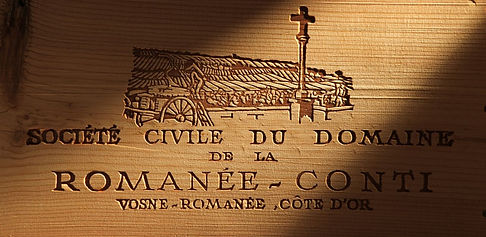

S
A B C D E F G H I J K L M N O P Q R S T U V W X Y Z
SAAL-SAIN
SAAL-SAIN SAIN-SAIN SAIN-SASS SASS-SAVO SAXU-SCRE SCRE-SICI SIGN-SONO SONO-STAG STAG-SUPE
Only 4,5 and 5,0 NJP wines (Nenad Jelisic Points) are presented as the best vintages.
If for some wine behind “the best vintages” stands “none”, it means that none of the wine's vintages got 4,5 NJP or 5,0 NJP.
Saale-Unstrut, a German wine region.
Saale-Unstrut grapes, Müller-Thurgau stands for 37%, Silvaner for 28%, Baccus for 6%, Gutedel for 5%, Pinot Blanc for 5%, Riesling for 3%, Gewurztraminer for 3%, Kerner for 2%, Portugieser for 4%, Pinot Noir for 1% and others for 6% of cultivated grapes.
Saale-Unstrut soils, lime and sandstone.
Sachsen, a German wine region.
Sachsen grapes, Müller-Thurgau stands for 38%, Pinot Blanc for 15%, Gewurztraminer for 15%, Gutedel for 11%, Riesling for 7%, Ruländer for 6% and others for 8% of cultivated grapes.
Sachsen soils, very vary. Weathered granite, loess, weathered gneiss, sand, lime, clay and porphyry.
Sadie Family, Columella (red dry blend wine; Syrah and Mourvedre), Swartland, Coastal Region, Western Cape, South Africa, the best vintages, until vintage 2010 none; 2011, 2012, 2013 and 2014. (2018-11)
Sadie Family, Old Vine Series, T Voetpad (white dry blend wine; Chenin Blanc, Muscat, Palomino, Semillon Blanc and Semillon Gris), Swartland, Coastal Region, Western Cape, South Africa, the best vintages, 2012, 2013, 2014 and 2015. (2018-11)
Sadie Family, Palladius (white dry blend wine), Swartland, Coastal Region, Western Cape, South Africa, the best vintages, until vintage 2014 none. (2018-11)
Sagrantino di Montefalco, both an Italian DOCG-wine and a DOCG-appellation, which is located in the wine region of Umbria. Sagrantino di Montefalco is made both as a dry (secco) and as a sweet wine (passito). In both cases, it must consist of 100% Sangiovese. The wine (both secco and passito) must be aged for at least 33 months of which at least 12 months in oak barrels. The appellation has 660 hectares. The average yield is 30 hl/ha. (2016-03)
Sainte Croix du Mont, a French appellation that belongs to the Entre-Deux-Mers wine area, which in turn belongs to the wine region Bordeaux. Sweet wines that are produced here are considerably cheaper than those that come from the appellations Barsac and Sauternes. Botrytis cinereas’s (noble rot) attack on the grape skins is crucial in the production of these wines. Without fog and high humidity would not be noble rot and Sainte Croix du Mont’s sweet wines, and in the autumn, when the climate is hot and dry and the temperature difference between the air and the Garonne river is the greatest, when the noble rot develops. The more the grapes are affected by the noble rot, the more they are vulnerable to rain and, therefore, a heavy rain can destroy the entire vintage. The appellation has about 450 hectares planted with vine. The average yield is 30 hl/ha. Of the 61 classified Bordeaux (wines) chateaux (1855 Classification) not one belongs to the appellation. (2012-06)
Sainte Croix du Mont grapes, Sémillon accounts for 85%, Sauvignon Blanc for 12% and Muscadelle for 3% of cultivated grapes in the appellation. (2012-06)
Sainte Croix du Mont soils, dominates clay and fossil rich limestone. (2012-06)
Saint Émilion, a French appellation that belongs to the wine district of Libournais (Right Bank), which in turn belongs to the wine region Bordeaux. The appellation has 5,481 ha. The average yield is 46 hl/ha for Grand Cru-wines and 53 hl/ha for non-Grand Cru-wines. The best wines usually come from vineyards that are planted on slopes consisting of limestone (so-called côtes) or gravel terraces. (2011-12)
Saint Émilion grapes, Merlot accounts for 60%, Cabernet Franc for 30% and Cabernet Sauvignon for 10% of cultivated grapes in the appellation. (2011-03)
Saint Émilion soils, vary. Clay and gravel mixed with sand on limestone.
Saint Émilion the best chateaux, Château Angélus, Château Ausone, Château Bellevue Mondotte, Château Cheval Blanc, Château Gracia, Château La Mondotte, Château Le Tertre-Rôtebouef, Château Magrez-Fombrauge, Château Pavie, Château Pavie-Decesse, Château Péby Faugères, Château Troplong-Mondot and Château Valandraud. (2012-05)
Saint Émilion the best vintages, 1945, 1947, 1970, 1982, 1985, 1989, 1990, 1995, 1998, 2000, 2005, 2010 and 2015. (2018-11)
Saint Émilion quality classes according to the 1996 Classification, Saint Émilion has three quality classes: 1. Premier Grand Cru Classé A (the highest class), 2. Premier Grand Cru Classé B and 3. Grand Cru Classé. (2011-09)
Saint Émilion Grands Crus Classé, to this quality class belongs fifty five chateaux: Château L'Arrosée, Château Balestard La Tonnelle, Château Bellevue, Château Bergat, Château Berliquet, Château Cadet-Bon, Château Cadet-Piola, Château Canon-la-Gaffelière, Château Cap de Mourlin, Château Chauvin, Château Corbin, Château Corbin Michotte, Château Curé Bon, Château Dassault, Château Faurie-de-Souchard, Château Fonplégade, Château Fonroque, Château Franc-Mayne, Château Grand-Mayne, Château Grand-Pontet, Château Guadet St-Julien, Château Haut-Corbin, Château Haut Sarpe, Château La Clotte, Château La Clusière, Château La Couspaude, Château La Dominique, Château La Marzelle, Château Laniote, Château Larcis-Ducasse, Château Larmande, Château Laroque, Château Laroze, Château La Serre, Château La Tour du Pin Figeac, Château La Tour du Pin Figeac (Moueix), Château La Tour Figeac, Château Le Prieuré, Château Les Grandes-Murailles, Château Matras, Château Moulin-du-Cadet, Château Pavie-Decesse, Château Pavie-Macquin, Château Petit-Faurie-de-Soutard, Château Ripeau, Château St-Georges-Côte-Pavie, Château Soutard, Château Tertre-Daugay, Château Troplong-Mondot, Château Villemaurine, Château Yon-Figeac, Clos de l'Oratoire, Clos des Jacobins, Clos St-Martin and Couvent des Jacobins. (2012-05)


NJ Wines
 |  |  |  |  |  |
|---|